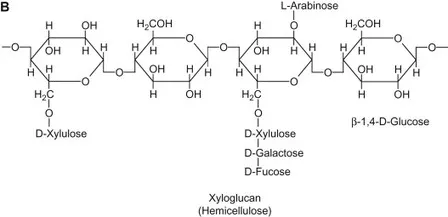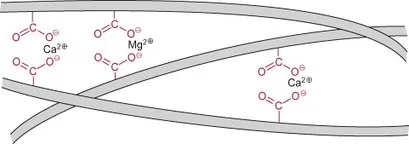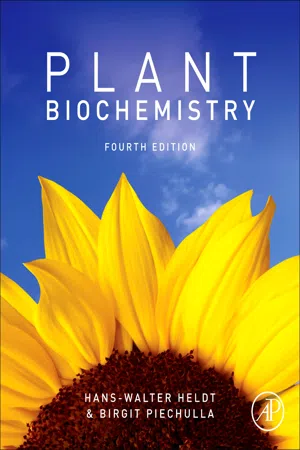
Plant Biochemistry
Hans-Walter Heldt,Birgit Piechulla
- 656 pagine
- English
- ePUB (disponibile sull'app)
- Disponibile su iOS e Android
Plant Biochemistry
Hans-Walter Heldt,Birgit Piechulla
Informazioni sul libro
The fully revised and expanded fourth edition of Plant Biochemistry presents the latest science on the molecular mechanisms of plant life. The book not only covers the basic principles of plant biology, such as photosynthesis, primary and secondary metabolism, the function of phytohormones, plant genetics, and plant biotechnology, but it also addresses the various commercial applications of plant biochemistry. Plant biochemistry is not only an important field of basic science explaining the molecular function of a plant, but is also an applied science that is in the position to contribute to the solution of agricultural and pharmaceutical problems.
Plants are the source of important industrial raw material such as fat and starch but they are also the basis for the production of pharmaceutics. It is expected that in the future, gene technology will lead to the extensive use of plants as a means of producing sustainable raw material for industrial purposes. As such, the techniques and use of genetic engineering to improve crop plants and to provide sustainable raw materials for the chemical and pharmaceutical industries are described in this edition. The latest research findings have been included, and areas of future research are identified.
- Offers the latest research findings in a concise and understandable manner
- Presents plant metabolism in the context of the structure and the function of plants
- Includes more than 300 two-color diagrams and metabolic schemes
- Covers the various commercial applications of plant biochemistry
- Provides extensive references to the recent scientific literature
Domande frequenti
Informazioni
1 A leaf cell consists of several metabolic compartments
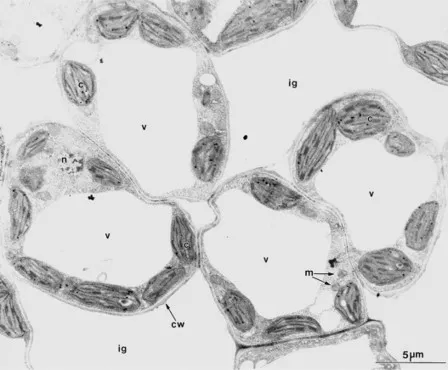
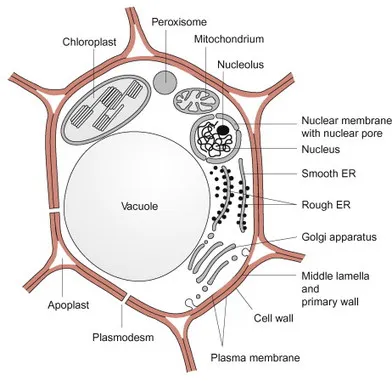
| Percent of the total cell volume | Functions (incomplete) | |
| Vacuole | 79 | Maintenance of cell turgor. |
| Store of, e.g., nitrate, glucose and storage proteins, intermediary store for secretory proteins, reaction site of lytic enzymes and waste depository | ||
| Chloroplasts | 16 | Photosynthesis, synthesis of starch and lipids |
| Cytosol | 3 | General metabolic compartment, synthesis of sucrose |
| Mitochondria | 0.5 | Cell respiration |
| Nucleus | 0.3 | Contains the genome of the cell. Reaction site of replication and transcription |
| Peroxisomes | Reaction site for processes in which toxic intermediates, such as H2O2 and glyoxylate, are formed and eliminated | |
| Endoplasmic reticulum | Storage of Ca++ ions, participation in the export of proteins from the cell and in the transport of newly synthesized proteins into the vacuole and their secretion from the cell | |
| Oil bodies (oleosomes) | Storage of triacylglycerols | |
| Golgi bodies | Processing and sorting of proteins destined for export from the cells or transport into the vacuole | |
| * Mesophyll cells of spinach; data by Winter, Robinson, and Heldt (1994). | ||

